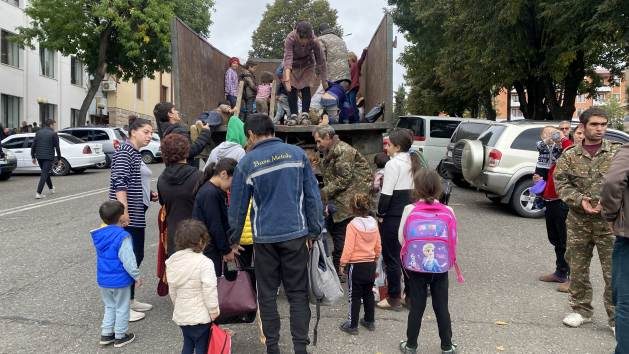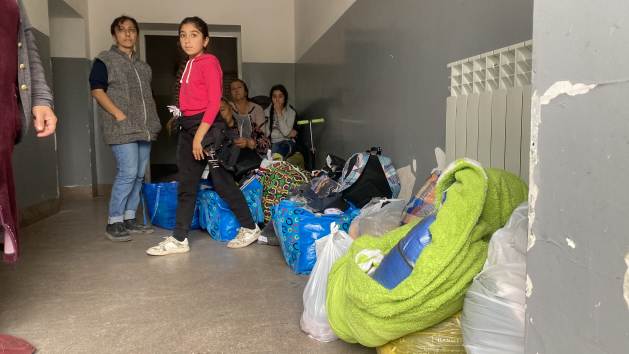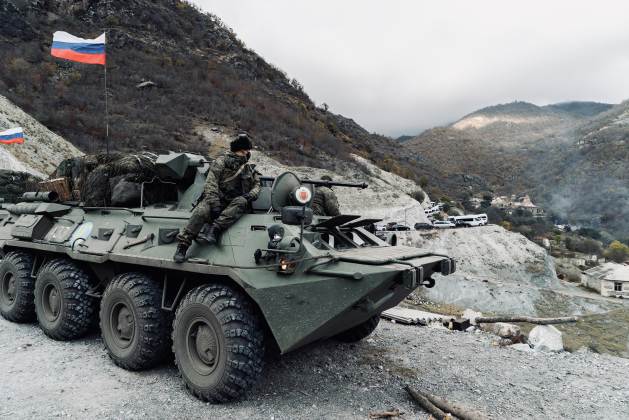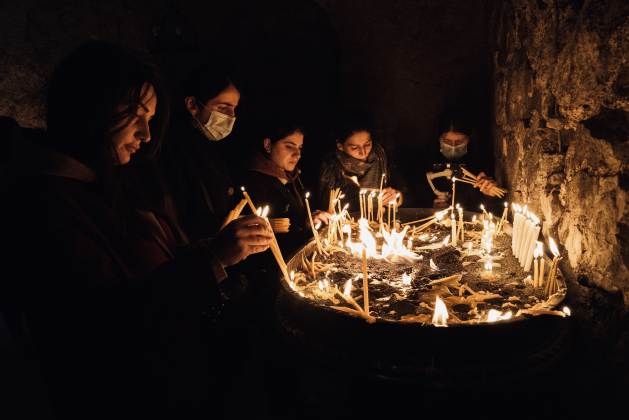After Nagorno-Karabakh, is Armenia Next?

ROME, Sep 26 (IPS) - On September 19, the sound of bombs reminded the world of a long-forgotten conflict. In the Caucasus, the Azerbaijan’s army was launching a massive attack against a small enclave, Nagorno-Karabakh.
Also called Artsakh by its Armenian population, Nagorno-Karabakh is a self-proclaimed republic within Azerbaijan which had sought international recognition and independence since the dissolution of the Soviet Union in 1991.
But that´s unlikely ever to happen.
Aware of the enemy's military superiority, and exhausted by a ten-month blockade by the Azeri army that has left its residents without even the most basic supplies, the Armenians of the enclave capitulated in less than 24 hours.
These fast-moving events, however, are just the latest chapter in a violent, painful saga dating all the way back to the end of the Cold War.
During the Soviet collapse, conflict between Armenians and Azeris led to a chain of forced expulsions and violence escalated sharply in Nagorno-Karabakh.
Thirty years ago, the First Nagorno-Karabakh War (1988-1994) ended with an Armenian victory this time, leading to the exodus of more than half a million Azerbaijanis back to Azerbaijan.
For the next 25 years, Armenians in the enclave enjoyed their own de facto republic, which they resumed calling by its old name: Artsakh.
However, the international community did not recognize Artsakh. Meanwhile, Azerbaijan spent those decades investing new profits from gas and oil to strengthen its army, investing heavily in new, high-tech military technology.
Azerbaijan would unleash its new force in 2020, during the Second Nagorno-Karabakh War. After 44 days of horror, Baku would retake many of the areas lost years before.
Armenians fled, some even digging up their dead from cemeteries and driving away with their ancestors in the trunk of their cars for reburial elsewhere, so certain they would never return to that land again.
For Azerbaijan, however, it was an incomplete victory. The Armenians had lost two-thirds of the territory under their control in the second war. But the areas Armenian troops had held on included key regions such as the capital and its surrounding districts.
Carnegie Europe’s Thomas de Waal, author of Black Garden: Armenia and Azerbaijan Through Peace and War, describes the conflict between Armenians and Azeris as “ethnic cleansing by each side in turn, rather than diplomacy.”
That the Azeris had squandered their turn three years ago became clear on September 19. The job had to be finished.

Now what?
Local sources point to hundreds of dead and thousands of displaced, although it is still too early to know the real figures. What can be confirmed is the mass exodus of thousands of Karabakhis to Armenia.
In addition to the disarmament and dismantling of the Armenian administration of the enclave, Baku has called for its “full integration into Azerbaijani society.”
Could the enclave become an autonomous region within Azerbaijan? It’s unlikely.
If nearly a million members of the Talish people -a Persian-speaking minority, many of whom people also live in neighbouring Iran- do not enjoy any rights as a minority in Azerbaijan, what could the 120,000 Armenians from Karabakh possibly expect?
The only thing standing between them and the Azeris were the Russian peacekeepers deployed after the 2020 peace agreement launched by Moscow.
But it didn´t quite work.
During the three years since the second war, armed incidents were common along an uneasy contact line between the two sides. Russian peacekeepers were hesitant to get between the two longstanding enemies, with Russian forces limiting themselves to observing and taking cover during frequent flareups.
Armenia’s Prime Minister, Nikol Pashinyan, had frequently accused the international community of looking the other way. Calls for Russia to be more assertive in its peacekeeping mission on the border received a cold shoulder from the Kremlin.

In early September, Armenia and the United States conducted joint military manoeuvres, widely interpreted as a signal that Armenia had run out of patience with Moscow.
Five Russian soldiers are reported dead in the current Azeri attack. But even that appears to have drawn little response from Moscow.
Complicating the situation further, the European Union maintains gas supply agreements with Azerbaijan, which have become key to making up Russian supplies disrupted by the war in Ukraine.
A complicit silence from the EU on the invasion has allowed Baku and Moscow to close ranks against the West. Only Turkey -a close ally of Azerbaijan- is likely to find an open line to Baku and Moscow now, and may play a crucial role as a third voice.
Amid the high-wire diplomacy, regular Karabakhis have been abandoned to their fate, and for most fleeing to Armenia is the only option. Images from the brutal 2020 second war, of Azeri soldiers cutting off the noses and ears of civilians and vandalizing monasteries, remain fresh in local memory.

Just a slice of land
The new conflict has also shed light on a longstanding strategic objective of Baku: to join the region to Turkey and the Mediterranean. Azerbaijan has been deploying troops in Armenia´s recognized territory since 2020, in a southern region called Syunik.
The strategic strip of land is the only thing standing in the way of connecting the Caspian region to commercial and military access to the open sea. Importantly, it’s a longstanding goal Baku shares with a key regional power, Turkey.
Azerbaijani President Ilham Aliyev clings to point 9 of the peace agreement that ended the 2020 war.
Where it says: “Ensure the free movement of people, vehicles and goods,” Aliyev believes he reads something about a certain “corridor” that, of course, he would control but that could isolate Armenia from its Persian neighbour.
Its consequences for Armenia would be disastrous: Iran is the only country with which Armenia maintains a fluid commercial link given that its borders with Azerbaijan and Turkey have been closed since the 90s.
On the other hand, relations with Georgia tend to be problematic due to ties of this with Ankara.
On Monday 25, while Karabakhis were fleeing in their dozens of thousands, Turkish President, Recep Tayyip Erdogan visited the Azerbaijani enclave of Nakhchivan for the first time.
Bordering Turkey, Nakhichevan would be a strategic part of the controversial corridor.
The fate of Nagorno-Karabakh will surely ripple through the region and beyond. “If Artsakh falls, Armenia will also fall,” Davit Baboyan, former Foreign minister of the enclave, told IPS several months ago.
Baboyan calls the current situation the “worst moment in Armenian history since the genocide.” More than one and a half million Armenians were exterminated in the Armenian genocide, the notorious Anatolian purges that occurred in the first decades of the 20th century.
On August 9, a former prosecutor of the International Criminal Court, Luís Moreno Ocampo, warned of “the threat of a new genocide against the Armenian people.”
As the world watches the exodus of the Karabkhis from the land they have inhabited for thousands of years, the images may be repeated in Armenia in the short term.
© Inter Press Service (2023) — All Rights Reserved. Original source: Inter Press Service
 Global Issues
Global Issues